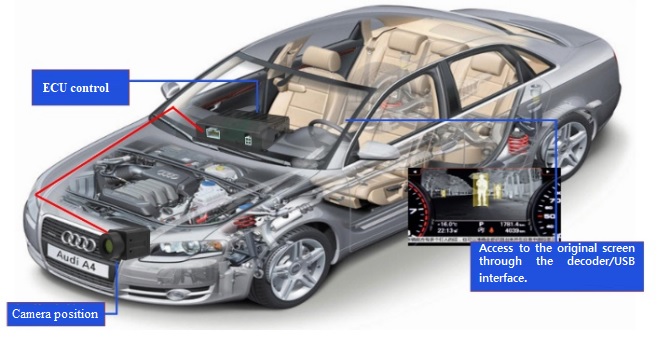How Thermal Imaging Cameras
Introduction to Thermal Imaging Cameras
Thermal imaging cameras have emerged as one of the most revolutionary technologies in recent years, transforming various industries and providing invaluable insights that were once unimaginable. These cutting-edge devices utilize infrared radiation to capture and visualize heat signatures, enabling professionals from different fields to identify and analyze temperature variations with remarkable precision. By harnessing the power of thermal imaging cameras, industries such as construction, firefighting, energy efficiency, and security systems have witnessed a significant paradigm shift. In this article, we will delve into the world of thermal imaging cameras and explore how they are revolutionizing these industries.
The Basics of Thermal Imaging Cameras
Before delving into their applications in different sectors, it is essential to understand the fundamental workings of thermal imaging cameras. At their core, these devices rely on infrared sensors that detect the heat emitted by objects and convert it into a visible image. Unlike traditional cameras that capture visible light, thermal imaging cameras operate in the long-wave infrared range. This unique capability allows them to detect temperature differences as minute as 0.1 degrees Celsius, making them highly accurate tools for capturing thermal data.
The images produced by thermal imaging cameras provide a visual representation of temperature distribution across an object or scene. Each pixel in the image corresponds to a specific temperature value, creating a color gradient that highlights hotspots and cold spots. Typically displayed in shades of red (for hotter areas) and blue (for colder areas), these images offer valuable insights into heat patterns and anomalies that are imperceptible to the naked eye.
Applications in the Construction Industry
In the construction industry, thermal imaging cameras have revolutionized how professionals assess building structures for potential issues. By identifying variations in surface temperatures, these devices can pinpoint areas prone to energy loss or insulation problems. This information enables architects and engineers to make informed decisions regarding material selection and design modifications that enhance energy efficiency.
Moreover, thermal imaging cameras play a crucial role in detecting hidden flaws within walls or ceilings, such as water leaks or electrical faults. By capturing the temperature differences caused by these issues, construction professionals can identify problem areas without invasive measures. This not only saves time and resources but also ensures the safety and longevity of the structures being built.
Benefits for Firefighters and First Responders
For firefighters and first responders, thermal imaging cameras are invaluable tools that aid in search and rescue operations. In emergency situations where visibility may be severely limited, these devices allow firefighters to navigate through smoke-filled environments with greater ease. By detecting heat signatures emitted by individuals or objects, thermal imaging cameras help locate trapped victims swiftly, potentially saving lives.
Additionally, thermal imaging cameras assist in identifying hidden hotspots within a fire scene. This enables firefighters to target their efforts effectively and prevent potential flare-ups or re-ignition. The ability to visualize temperature variations in real-time provides crucial situational awareness, allowing firefighters to make informed decisions in high-pressure situations.
Use in Energy Efficiency and Home Inspections
Thermal imaging cameras have become indispensable tools for energy auditors and home inspectors seeking to enhance energy efficiency in residential and commercial buildings. By conducting thermal scans of buildings' exteriors and interiors, these professionals can identify areas of heat loss or air leakage. This information allows them to recommend targeted insulation improvements or sealing measures that significantly reduce energy consumption.
Furthermore, thermal imaging cameras enable home inspectors to detect hidden defects within walls or ceilings that may go unnoticed during traditional inspections. These defects include moisture intrusion, electrical faults, or insulation gaps that compromise the structural integrity of the building. By identifying such issues early on, homeowners can take corrective actions before they escalate into costly repairs or pose safety hazards.
Enhancing Security and Surveillance Systems
Thermal imaging cameras have revolutionized security systems by providing enhanced surveillance capabilities even in challenging conditions. Unlike traditional CCTV cameras that rely on visible light sources, thermal imaging cameras operate independently of lighting conditions. They can capture clear images regardless of darkness, fog, or other environmental factors that hinder visibility.
By detecting heat signatures emitted by individuals or objects, thermal imaging cameras enable security personnel to identify potential threats in real-time. This technology is particularly valuable in perimeter surveillance, where it can detect unauthorized intrusions even in complete darkness. Additionally, thermal imaging cameras can differentiate between humans and animals, reducing false alarms and enhancing overall security system efficiency.
Contact Us: Ms. Coco Huang
E-mail: sales@iasun.cn
WhatsApp/Wechat: +86 13510421923



